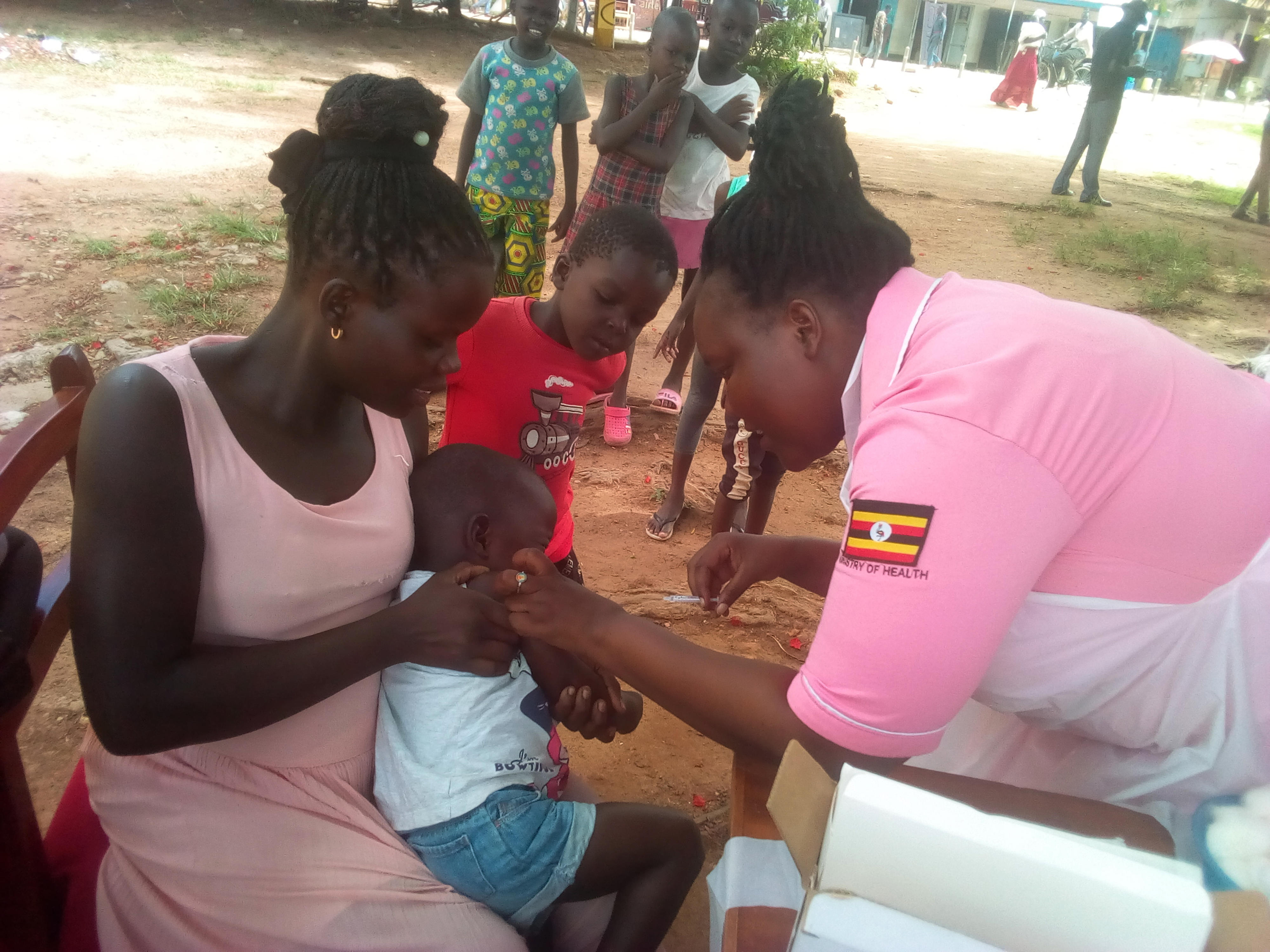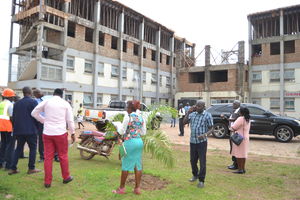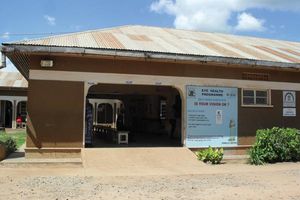
Luweero General Hospital admits a minimum of 5,000 clients every quarter, according to the management. Photos/Herbert Kamoga
Nestled in the heart of Uganda, Luweero District embodies a broader national challenge, the adverse impact of population growth on healthcare services.
Over the past decade, the population of Luweero has escalated from 456,958 in 2014 to 614,230 in 2024, according to the latest National Population and Housing Census conducted by the Uganda Bureau of Statistics in May.
While this 34.42 percent increase signifies vitality, it also casts a long shadow over the district’s healthcare system.
As the population of Luweero District grows, so does the demand for basic healthcare services from routine vaccinations to treatment for chronic and acute illnesses. This naturally leads to an increased consumption of medical supplies including drugs.
Even though the healthcare budget for medical supplies in the district has more than doubled in the past five years to about Shs1.5 billion in the 2024/2025 financial year, Dr Innocent Nkonwa, the Luweero District health officer, says the increase in funds has not kept pace with the rapid population growth and the consequent rise in healthcare needs.
The arithmetic of healthcare provision here is grim. The unit cost per person, based on that budget is approximately Shs2,442, a pittance in a country where healthcare costs are escalating.
“It is like giving every Luweero resident Shs2,000 to buy medicine for a full year, can it be enough? Every day, we face the reality of our limitations, the gap between what we need and what we have continues to widen, despite our best efforts,” Dr Nkonwa said.
He added: “That means I have to put in place controls to ensure that there is supply for the bigger part of the year. We normally prioritise the most prevalent illnesses like malaria, coughs, and pneumonia in the procurement of medicines, yet ideally, we would be able to supply to whoever comes.”
He further said: “As the population increases, we shall overly prioritise, for example, non-communicable diseases are becoming more prevalent but we are keeping a blind eye, concentrating on infectious diseases, because for lifestyle diseases their budget for a single doze is much higher compared to that of malaria.”
The challenges are manifold. National Medical Stores (NMS), the primary supplier of drugs to public health facilities, consistently delivers less than budgeted. In the Financial Year 2022/2023, for instance, there was a shortfall of Shs384 million worth of medicines.
Such discrepancies lead to frequent stockouts, forcing healthcare providers to make decisions that no doctor should have to make, deciding who receives medication and who does not.

Health workers prepare medicine at Luweero General Hospital. National Medical Stores (NMS), the primary supplier of drugs to public health facilities, consistently delivers less than budgeted.
Luweero hospital, the epicentre of this healthcare strain, is a case study of the district’s broader challenges. Every quarter, the hospital admits more than 5,000 clients. Monthly, the outpatient department alone sees a minimum of 5,000 patients, far exceeding the hospital’s target.
According to Dr Bruno Oyik, the medical superintendent of Luweero hospital, the increased patient load has precipitated frequent drug shortages at the facility.
With stockouts becoming a routine challenge, healthcare providers often have to prescribe medications that patients must purchase at private pharmacies, often at a higher cost.
The consequences of these systemic shortfalls are palpable in the crowded waiting rooms of Luweero’s health facilities.
Hadijah Nalwanga, a mother of four, two of whom are sticklers, recounts her ordeal when her youngest child fell ill with malaria, a common yet potentially deadly disease in the country.
“I was told at the facility that there was no Coartem (a common antimalarial drug). I had to sell some of our chickens to buy the medicine from a private pharmacy,” she says.
This scenario is not unique to Nalwanga. It is an everyday reality for many in Luweero, where the average income is barely enough to cover necessities, let alone unexpected healthcare expenses.
This crisis in healthcare due to inadequate drug supplies and underfunding is not just a local issue but a reflection of a larger national challenge. Uganda, like many developing countries, grapples with allocating limited resources across numerous pressing needs.
There is a critical need for a comprehensive rethink of how healthcare is funded and delivered. This includes increasing national health expenditure, improving supply chain logistics for medicine delivery, and investing in preventive care to reduce the overall disease burden.
Government responds
In an earlier interview, Mr George Otim, the commissioner of Health Infrastructure in the Ministry of Health, said the country is not facing a crisis.
“In the last five years, we have added 413 beds in health centre IIIs across the country. That translates to 8,026 beds. Some health centre IVs in districts such as Sembabule and Bugweri don’t have patients,” he says.
“For instance, Busesa Health Centre IV has many beds but only expecting mothers who go there to deliver. So, we can handle this population, unless an epidemic occurs,” he adds.
At a recent World Health Organisation (WHO) dialogue, the Minister of Health, Dr Jane Ruth Aceng, said training, recruitment and retaining of human resources for health, is an emergency that the ministries of Finance, Planning and Economic Development and Public Service must embrace.
“When you want to recruit, you need clearance from Public Service, which may take eight months, and when you delay to recruit, the permanent secretary gets a letter asking her to return the money. You request for theatre cadres, but you are only given an anaesthetic officer without a theatre nurse. Do these people understand that some of the health cadres work as a team?” she is quoted as saying.
She added that of the 1,500 health professionals churned out of training institutions annually, very few are recruited into the health system.
Dr Charles Olaro, the director of clinical services in the Ministry of Health, said in an earlier interview that increasing the number of health workers is the next point of action.
“We are producing health workers (from universities and tertiary institutions) but they need to be recruited and retained to offer services to the population. We need resources to get those people in place. If this is done, it will reduce the burnout of health workers who are currently employed by the government,” he said.
The health budget for the 2024/2025 financial year is Shs2.946 trillion. However, this budget does not cater for the new staffing structure at health facilities.
“Definitely that is now the paradox. The health budget has been increasing and progressing, but not in proportion to the growing population. So, it will definitely bring a few challenges in terms of long-term planning,” Dr Olaro says.
He adds: “However, we are optimistic that our plans of upgrading Health Centre IVs and recruiting more health staff will come to fruition. The structures are not supposed to be filled in one year. The last time we restructured was 20 years ago, so we have the next 20 years to get it right. It is important that, at least, we should have some recruitment process going on every year.”
Using the mantra of ‘Health is Wealth’, Dr Olaro calls on the government to increase investment in the healthcare system.
“If people are healthy, they will participate in economic activities that will develop the country, after all, most people spend their money on ill health. So, investing in health is the right investment,” he says.
“The good thing is that the private health sector has also grown, offering services to those who can pay. Our oversight role as a ministry, is to ensure the quality of services are good and that the patients are safe,” he adds.




